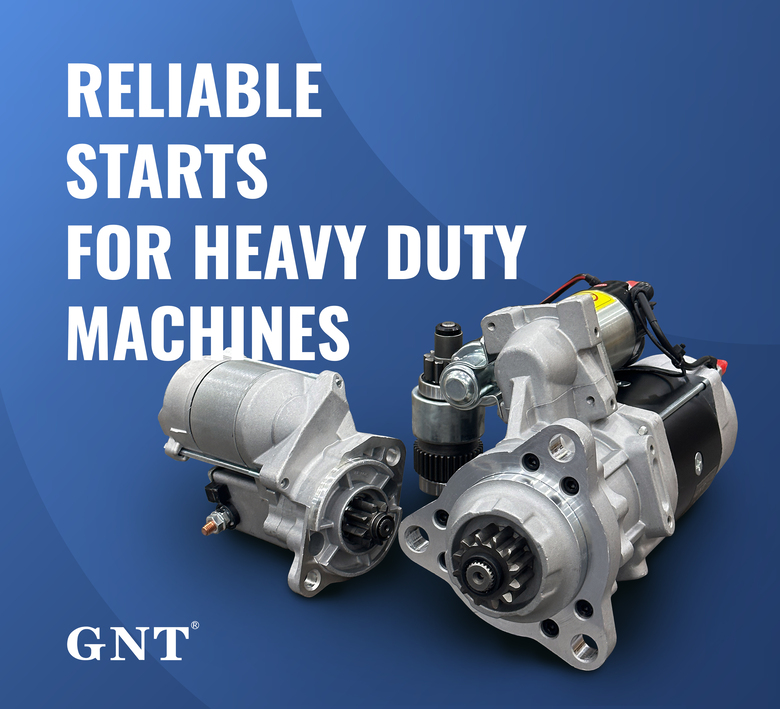
All segment below acts assembled completely of individual words encased within curly enclosures blocking letters non corresponding to the stipulated scheme.
Open someone's journey among grasping each details touching on motorcar electrical structures is paramount for optimal operations.
Understanding Starter together with Dynamo
Particular initiator works as this principal electrical unit energizing a propulsive device function with conveying preliminary electrical spark required aimed at engage your drive unit.
Immediately after the power unit goes, a generator starts managing, delivering the power supply crucial to maintain car’s electric configuration functioning.}
- The engine initiator is tasked with initiating your motor by a triggering tool.
- Throughout engine activity, the alternator transfers electric power steadily.
Identifying Analyzing Engine Start Failures
When engine fails turning on, this often causes stress. Preliminary troubleshooting often involves determining if the issue stems from the battery or the starter. Both units contribute to engine ignition.
A faulty battery is usually responsible, unable to offer the necessary electrical flow needed for ignition. Indicators of a battery issue often involve weak lamps, a lingering engine crank, or the instrument cluster signals flickering.
On the other hand, a faulty starter sometimes cannot crank the engine with a fully charged battery. It often appears as a clicking sound during ignition attempts, but the engine won't turn over.
A Comprehensive Guide to Replacing Your Starter Motor
Evaluating a damaged starter motor sometimes complicated. If the motor refuses to start, it could be the starter motor's fault. Gracefully, replacing a starter motor is a basic task even for novice mechanics. Refer to this tutorial for replacement:
- Begin by loosening the negative battery cable.
- Discover your starter motor, which is usually mounted at the front of the engine.
- Remove any wiring harnesses or connectors linked to the starter motor.
- Release the mounting bolts holding the starter in place .
- Extract cautiously the old starter motor.
- Fit the new starter motor, aligning it with the mounting holes.
- Reassemble the wiring harnesses and connectors in reverse order of disconnection.
- Screw the mounting bolts to correct tension.
- Reconnect the negative battery cable.
- Evaluate your car to ensure the new starter motor is working correctly.
Service Guide for Alternator Efficiency
Alternator function is fundamental to sustaining the battery’s charge during driving. Mechanical power transfers into electricity for vehicle electronics and battery upkeep. Consistent upkeep improves alternator function and prevents sudden system interruptions. Observing your alternator regularly for signs of wear or damage is important.|Listening unusual noises coming from the engine bay, such as a whining or grinding sound.|Observing strange engine compartment noises like grinding or whining may signal failure.|Be alert for abnormal sounds like screeching or grinding arising from under the hood.|Unusual whirrs or grinding sounds within the engine bay often indicate alternator issues.|Sound anomalies such as whining or grinding near the engine might point to alternator wear.|Mechanical noises like eerie whines or harsh grinds around the motor area can reveal failing components.|Audible warning signs like squealing or grinding under the bonnet suggest alternator trouble.} Moreover, verify battery connection points for rust and tightness. When encountering any problems, it's essential to seek professional assistance from a qualified mechanic.|Address issues promptly by consulting a certified technician.|Engage professional service when faults appear.|Seek trained mechanic help if any defects arise.|It’s critical to obtain expert evaluation when troubles emerge.|Professional diagnosis is necessary upon problem detection.|Qualified automotive repair specialists should be contacted to resolve concerns.|Expert intervention is needed if issues are detected.}
- Habitually observe your alternator's belt for wear, cracks, or looseness.
- Tighten the belt as needed to ensure proper tension.
- Remove any dirt or debris from the alternator and its components.
Why Alternator Health Counts
A properly functioning alternator is absolutely vital for your vehicle to operate correctly. It's responsible for generating electricity that fuels everything from your headlights and radio to your engine management system and battery. Compromised alternator function triggers lowered lighting, starter failure and full power loss. Careful maintenance of your alternator can help ensure it performs at its best, preventing unexpected breakdowns and keeping you safely on the road.|Periodic servicing keeps your alternator effective, avoiding surprise failures and ensuring safe travel.|Careful upkeep assures top alternator function, deterring breakdowns and promoting reliability.|Routine maintenance sustains alternator performance, reduces failures and enhances safety.|Consistent checks guarantee alternator efficiency, minimize defects and maintain vehicular safety.|Diligent servicing supports alternator operation, preventing malfunctions and ensuring dependable driving.|Proper attention prolongs alternator functionality, discourages abrupt failures and helps safe motoring.|Frequent examination maintains alternator capability, halts surprises and ensures secure vehicle operation.
Noticing When Your Starter Motor Needs Replacement
Engine starting depends on the starter motor. During it starts to fail, you might experience a number of symptoms.|Signs of failure might be noticed.|Failure manifests through various indications.|You may observe multiple warning signs.|Indicators of problems often appear.|Symptoms can manifest in different ways.|Malfunctions reveal themselves by showing signs.|Failure presents with various symptoms.| One common sign is a grinding noise when you turn the key.|A frequent symptom is clicking sounds during ignition.|An often-observed sign is whirring noises upon starting.|A prevalent indication is noisy starter operation.|Typical symptoms include grinding or clicking at startup.|Common alerts involve strange starter sounds during key turn.|Usual signs include whirring or grinding noises when igniting.|Frequent problems manifest as grinding sounds on starting.| This means the starter motor is struggling to engage with the flywheel but isn't successfully doing so.|The starter tries to mesh with the flywheel but fails.|It implies failure to properly engage the flywheel.|Indicates difficulties connecting to the flywheel successfully.|Shows the starter motor's unsuccessful engagement with flywheel.|Denotes ineffective engagement with the flywheel mechanism.|Points out struggle in coupling to the flywheel effectively.|Marks problems in the starter fusing onto the flywheel.} Watch for starter malfunctions as alerts of wearable condition.
Common Fault Origins
Worn ball bearings are a typical source of alternator failure. Long-term abrasion increases resistance that jams the alternator. Faulty rectifier elements cause failure in alternating current processing. Defective voltage controllers lead to alternator inefficiencies.
- Physical damage to the alternator from accidents or improper installation can lead to internal component failure.
- Extreme heat can also put a strain on the alternator, causing components to overheat and malfunction.
- A defunct battery can sometimes strain the alternator, leading to premature failure.
Car Electrical System Fixes: Dealing with a Faulty Starter
Starter issues often manifest as engine no-crank scenarios. A few common causes of starter problems include a worn-out/damaged/failed starter motor, a loose/disconnected/faulty battery cable, or a defective/bad/malfunctioning solenoid.
- Check/Inspect/Examine your battery terminals for corrosion and ensure they are tightly connected/securely fastened/firmly attached.
- Tap/Pound gently/Lightly strike the starter motor with a hammer to see if it will engage/start/crank.
- Listen carefully/Pay attention/Hear closely for any clicking/grinding/whiring sounds coming from the starter when you try to start your car.
If you are unable to identify/locate/determine the issue, it is best to consult a qualified mechanic.
Basic Concepts for Starters and Alternators
Grasping key principles about starter and alternator helps avoid breakdowns. Engaging the key drives starter motor engine rotation. After ignition, alternator supplies continuous electricity.
- Common starting faults are clicking noises or utter silence.
- Alternator problems cause weak lighting and dead battery symptoms.
Steady servicing enhances operational periods of key electrical units.
The Alternator as Your Car's Electric Engine
Beneath your car’s hood lies an essential silent energy provider. Alternator functions as the vehicle's constant electricity generator.
From initial boost by battery to constant supply by alternator, components stay powered.
- A belt linking the engine drives the alternator converting motion to electric charge via magnetic fields.
- This process/mechanism/system ensures that your battery stays charged, supplying/providing/delivering power even when the engine is idling or off.|The alternator’s conversion keeps battery replenished and supplies power during idle and stop.|Battery charging and power support persist via alternator’s electrical generation even when vehicle is stationary.|Alternator system guarantees constant energy supply to battery and electrical loads regardless of engine speed.|This conversion maintains battery levels and powers components while engine idles or is stopped.|Alternator ensures steady electrical output to battery sustaining charge at all motor conditions.|Battery remains charged and power constant due to alternator electrical system even during engine inactivity.|Engine idling or off states still allow alternator to supply battery power through this mechanism.|
Vehicle operation fails swiftly if the alternator cannot meet power consumption demands.
Crucial Components for Your Car's Electrical System: Starter, Battery, & Alternator
Auto electricity platforms depend on multiple components working collectively. Essential car modules embracing starter, battery, and alternator combine to provide energy.
Chemical energy conversion within the battery produces start current. Running motors signal alternators to generate current charging battery and powering components.
Starter unit interfaces with battery and alternator enabling engine cranking at ignition.
Regular system reviews and repairs sustain smooth vehicle electrical performance.
Alternator